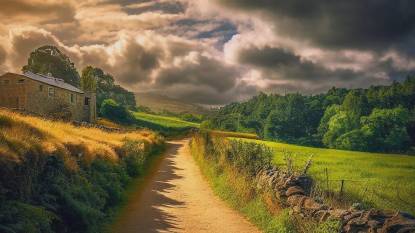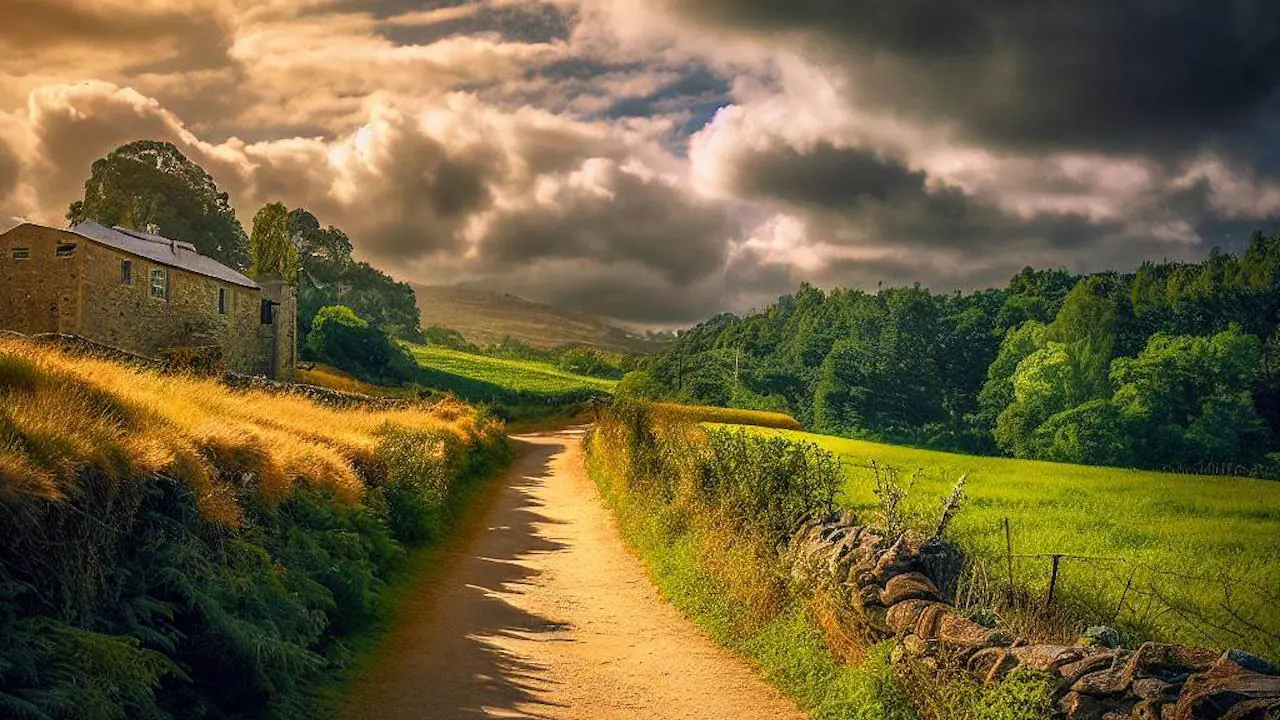
Camino Francés: Ruitelán to Hospital Da Condesa - Stage 19
Posted: | Updated:Reading time: 7 minutes
Camino Francés: Ruitelán to Hospital Da Condesa - Stage 19
Posted: | Updated:Reading time: 7 minutes
By: Simon Kemp, Editor
The Ruitelán to Hospital da Condesa stage on the Camino Francés journey spans 18.6 km (11.5 miles), featuring uphill and downhill stretches across varied terrain. It begins with a climb to La Faba, continues uphill to Laguna De Castilla, and then to O Cebreiro. After descending and climbing again to Alto do Poio, the path descends to Linar, concluding downhill at Hospital da Condesa.
Route Description: Ruitelán to Hospital Da Condesa
The stage from Ruitelán to Hospital da Condesa is a challenging yet rewarding 18.6 km (11.5 miles)stretch of the Camino Francés, characterized by significant elevation changes and varied terrain, including woodland trails and rural dirt paths.
Starting with a climb from Ruitelán through lush landscapes to La Faba, the route continues uphill to Laguna De Castilla, leading to a steep ascent to O Cebreiro, famed for its round stone huts and historic Church of Santa Maria.
Following a descent and another climb to Alto do Poio, the path descends steeply to Linar and then continues downhill to Hospital da Condesa. Despite the challenges of this stage, the natural beauty and historic sites offer a rich and fulfilling experience.
A. Detailed Breakdown of the Route
- Ruitelán to La Faba (4.5 km) Starting from the quiet hamlet of Ruitelán, this stage begins with an uphill climb through lush green landscapes towards La Faba. This stretch offers wonderful views of the valley, and the air is filled with the scent of fresh vegetation. La Faba, a small village, is known for its quaint charm and peaceful environment, providing a serene stop before the continued ascent.
- La Faba to Laguna De Castilla (2.1 km) The trail continues uphill from La Faba through beautiful woodland. You’ll find yourself surrounded by nature, making for a peaceful and scenic journey. The endpoint of this section is the quiet village of Laguna De Castilla, nestled in the mountainous landscape.
- Laguna De Castilla to O Cebreiro (2.4 km) The path leading from Laguna De Castilla to O Cebreiro is a steep uphill climb. O Cebreiro, a small mountain village, is famed for its unique, round stone huts known as ‘pallozas.’ The historic Church of Santa Maria is a must-visit, holding a reputed holy grail relic.
- O Cebreiro to Linar (6 km) The next leg begins with a gentle descent from O Cebreiro, followed by another climb towards the high point at Alto do Poio. From there, you’ll embark on a steep downhill walk through diverse terrain of forests and farmlands, eventually reaching the small hamlet of Linar.
- Linar to Hospital da Condesa (3.6 km) The final part of this stage follows a downhill trail, leading you through the beautiful, scenic landscape towards Hospital da Condesa. This destination marks the end of a challenging, yet incredibly rewarding day on the Camino.
B. Terrain and Elevation
This stage is characterized by significant changes in elevation, involving several uphill climbs and steep descents. The terrain is varied, incorporating woodland trails, rural dirt paths, and some stretches of minor roads.
C. Points of Interest
- O Cebreiro: This picturesque mountain village is known for its unique round stone huts or ‘pallozas.’ The Church of Santa Maria, holding a famed holy grail relic, is an important historical and religious site.
- Alto do Poio: Marking one of the highest points on the Camino Francés, Alto do Poio offers breathtaking, panoramic views of the surrounding landscapes.
D. Potential Challenges
The significant changes in elevation, including steep ascents and descents, make this stage quite challenging. Good footwear is crucial to handle the rugged terrain and to prevent slips during downhill walks. Regular breaks, particularly on uphill stretches, can help manage the intensity of the climb.
E. Rest Stops
The villages of La Faba, Laguna De Castilla, and O Cebreiro, as well as the hamlet of Linar, serve as important rest stops along this stage. They offer opportunities to catch your breath, hydrate, and enjoy the surroundings. At the end of this stage, Hospital da Condesa provides accommodations and eateries for rest and rejuvenation.
Departure point: Ruitelán
Ruitelán is a quaint village nestled amidst the serene countryside of northern Spain. Surrounded by lush green fields and rolling hills, it offers a peaceful sanctuary along the Camino de Santiago pilgrimage route.
Serene Surroundings
Immerse yourself in the tranquility of Ruitelán’s natural beauty. As you wander through the village, be captivated by the breathtaking vistas of verdant landscapes and vibrant wildflowers. The gentle breeze whispers through the trees, creating a sense of calm and serenity that envelops the atmosphere.
Rich Heritage
Despite its small size, Ruitelán carries a rich heritage that echoes through its streets. Discover the timeless charm of the Iglesia de Santa María, a historic church steeped in centuries of spiritual significance. Its simple yet elegant architecture serves as a symbol of the village’s deep-rooted religious traditions.
Welcoming Spirit
Experience the warm and genuine hospitality of Ruitelán’s residents. The village embraces pilgrims with open arms, offering comfortable accommodations and nourishing meals in welcoming albergues. Engage in heartfelt conversations with fellow travelers, sharing stories and forging connections that transcend borders and cultures.
Tranquil Pathways
Embark on a journey through Ruitelán’s tranquil pathways, where the Camino de Santiago weaves its way through the village. Explore the captivating countryside, meandering along winding trails that reveal the beauty of the surrounding meadows. Bask in the serenity that envelops the village, allowing for introspection and rejuvenation.
Local Delights
Indulge in the authentic flavors of Ruitelán by savoring the regional cuisine offered by its charming eateries. Sample traditional Spanish dishes crafted with locally sourced ingredients, such as hearty stews bursting with robust flavors or delectable desserts that satisfy the sweetest cravings. Let your taste buds embark on a delightful journey through the culinary treasures of the village.
Conclusion
Ruitelán beckons pilgrims and travelers alike with its serene countryside, rich heritage, warm hospitality, and delightful culinary experiences. Explore its tranquil surroundings, immerse yourself in its history, connect with fellow adventurers, and embrace the welcoming spirit of this idyllic village. Let Ruitelán leave an indelible mark on your journey, a cherished memory of peaceful moments and genuine encounters.
Camino Francés Diary: Route segment: 19
Tuesday 24th October 2000
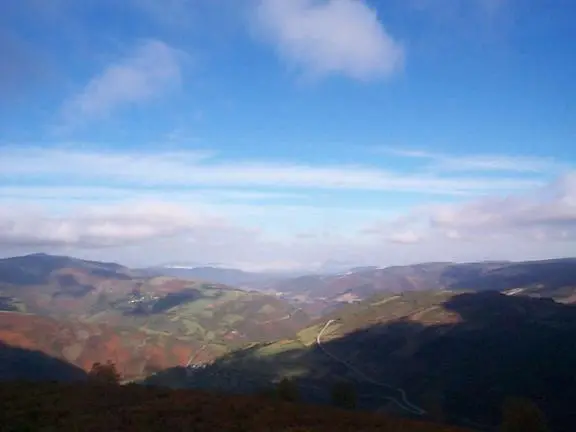
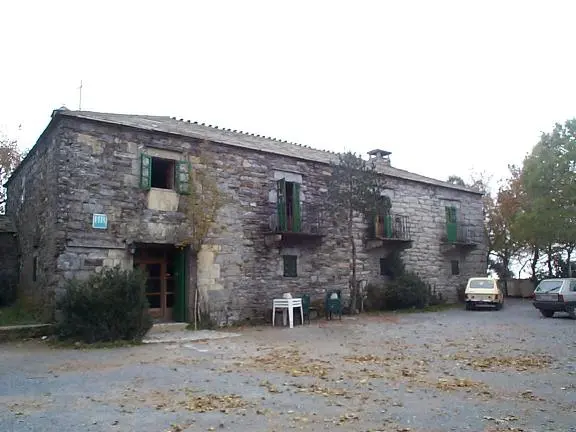
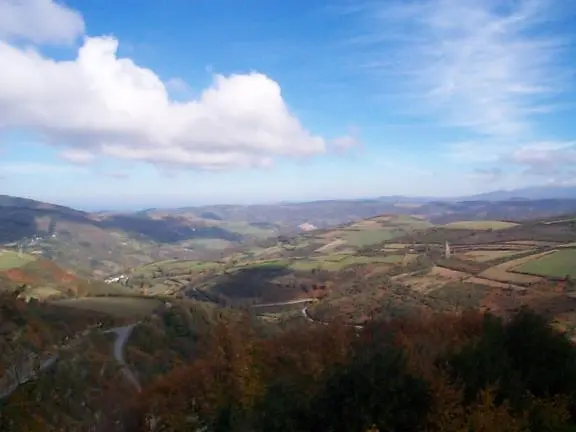
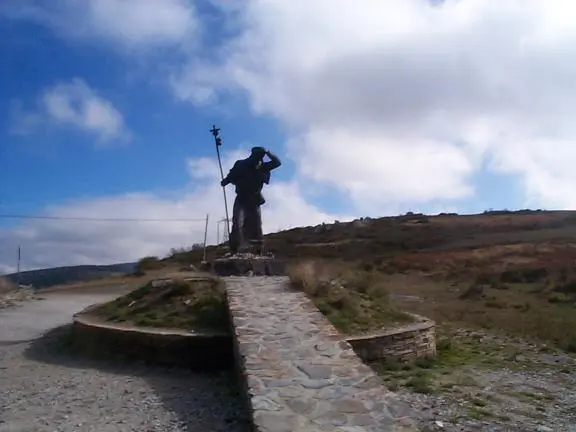
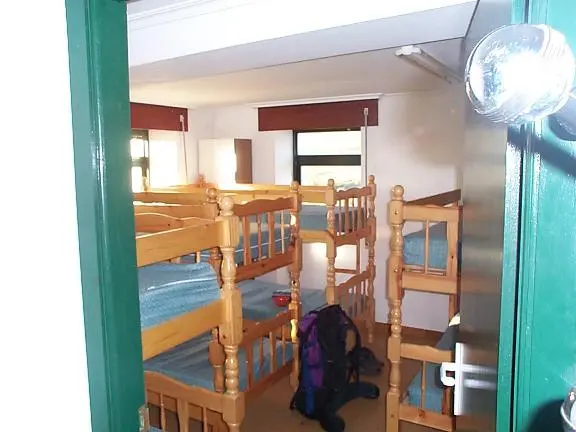
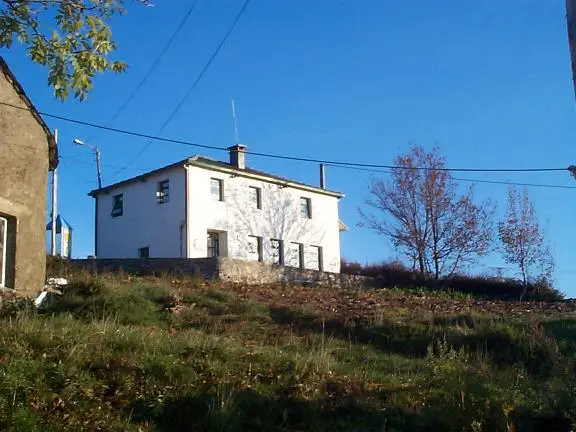
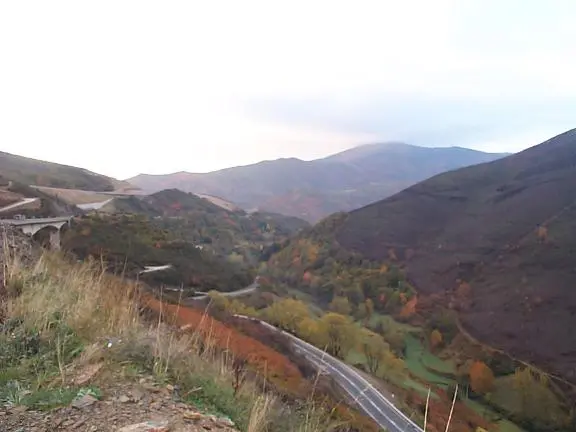
Destination: Hospital Da Condesa
Hospital Da Condesa is a charming town located along the Camino de Santiago pilgrimage route in Spain. Nestled amidst the picturesque countryside, this village offers a serene and welcoming atmosphere to travelers.
Peaceful Setting
Hospital Da Condesa is set in a tranquil environment, surrounded by rolling hills and lush green fields. The gentle breeze rustles through the trees, creating a soothing ambiance that invites relaxation and reflection. The idyllic landscape provides a calming backdrop for weary pilgrims seeking respite along their journey.
Historical Significance
The town derives its name from the ancient hospital, Hospital de la Condesa, which once stood here. This hospital provided refuge and medical care to pilgrims. Although the original building no longer exists, the town’s name pays homage to its historical significance as a place of hospitality and support for travelers.
Hospitality and Community
Hospital Da Condesa carries forward the tradition of hospitality with its warm and welcoming community. Pilgrims will find comfort in the town’s albergues and hostels, where they can rest, recharge, and connect with fellow travelers. The locals extend a friendly hand, offering assistance and sharing stories that create lasting memories along the Camino.
Scenic Walks
The village is surrounded by scenic walking trails, allowing pilgrims to immerse themselves in the beauty of the surrounding nature. Take a leisurely stroll along the paths, breathe in the fresh country air, and appreciate the serene landscape. The captivating views and peaceful atmosphere offer a rejuvenating experience for travelers.
Local Cuisine
Hospital Da Condesa offers a taste of regional flavors through its charming cafes and restaurants. Sample the local delicacies, from hearty stews to freshly baked bread, and savor the simple pleasures of the cuisine. Whether it’s a comforting meal or a cup of locally brewed coffee, the culinary offerings provide nourishment and a taste of the town’s culture.
